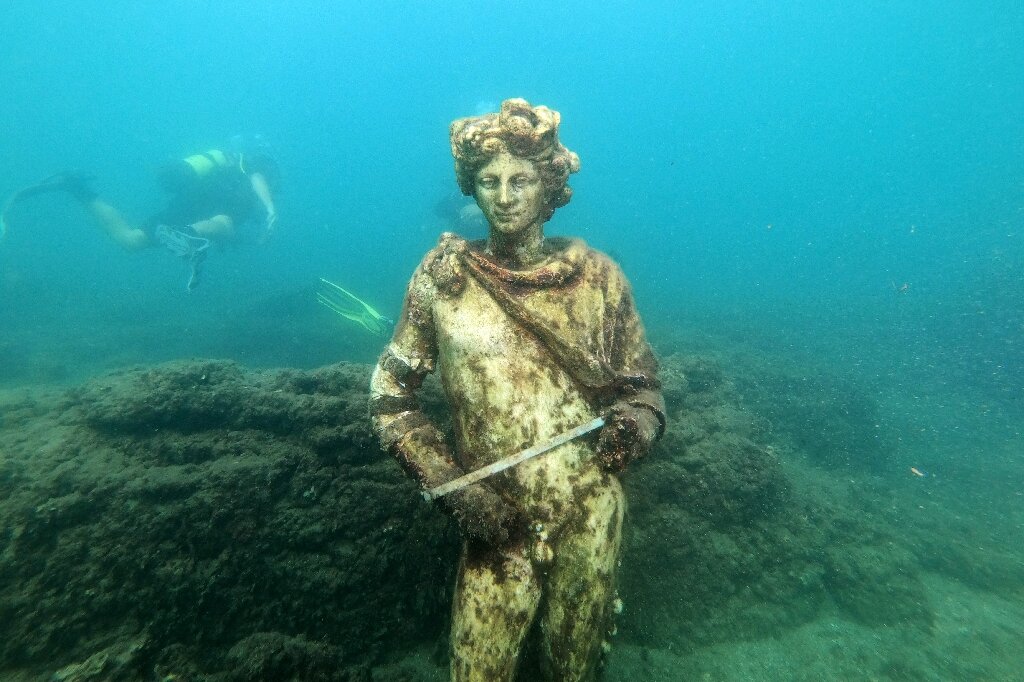Fish dart across mosaic floors and into the ruined villas, where holidaying Romans once drank, plotted, and flirted in the party town of Baiae, now an underwater archaeological park near Naples. Statues that once decorated luxury abodes in this beachside resort are now playgrounds for crabs off the coast of Italy, where divers can explore ruins of palaces and domed bathhouses built for emperors.
Rome's nobility was first attracted in the 2nd century BC to the hot springs at Baiae, which sits on the coast within the Campi Flegrei, a supervolcano known in English as the Phlegraean Fields. Seven emperors, including Augustus and Nero, had villas here, as did Julius Caesar and Mark Anthony. The poet Sextus Propertius described the town as a place of vice, which was a foe to virtuous creatures.
According to the Roman scholar Varro, it was where old men behave like young boys, and lots of young boys act like young girls. But by the 4th century, the porticos, marble columns, shrines, and ornamental fish ponds had begun to sink due to bradyseism, the gradual rise and fall of land due to hydrothermal and seismic activity. The whole area, including the neighboring commercial capital of Pozzuoli and military seat at Miseno, was submerged. Their ruins now lie between four and six meters (15 to 20 feet) underwater.
Marcello Bertolaso, head of the Campi Flegrei diving centre, which takes tourists around the site said, it's difficult, especially for those coming for the first time, to imagine that you can find things you would never be able to see anywhere else in the world in just a few meters of water. Divers love to see very special things, but what you can see in the park of Baiae is something unique.
The 177-hectare (437-acre) underwater site has been a protected marine area since 2002, following decades in which antiques were found in fishermen's nets and looters had free rein. Divers must be accompanied by a registered guide.
A careful sweep of sand near a low wall uncovers a stunning mosaic floor from a villa that belonged to Gaius Calpurnius Pisoni, known to have spent his days here conspiring against Emperor Nero.




0 Comments